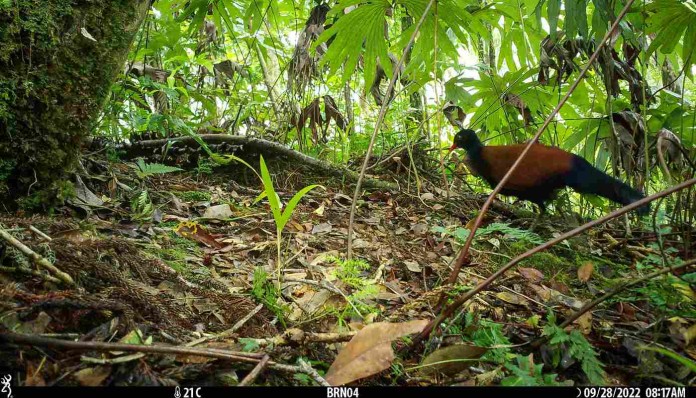Nightjars are medium-sized nocturnal instectivorous birds in the family Caprimulgidae and the order Caprimulgiformes.
These birds are found all around the world, with the exception of Antarctica, and certain island groups such as the Seychelles.
Characterized by long wings, short legs, and very short bills, nightjars take flying insects on the wing, usually at night. During the day, they sleep on the ground or perched, usually lengthwise, on a branch.
“Nightjars are among the most difficult bird species to study due to their unobtrusive and nocturnal behavior and cryptic plumage,” said lead author Dr. George Sangster and his colleagues.
In their research, the authors focused on the nightjars of the Caprimulgus macrurus complex.
This species complex is distributed from Pakistan to Australia and comprises six morphologically similar but vocally distinct species.
“Fieldwork on Timor and Wetar, Lesser Sunda Islands, has resulted in the discovery of a seventh species in the complex, which we describe as a new species,” the researchers said.
“This species has previously been confused with Caprimulgus macrurus, Caprimulgus celebensis and Caprimulgus manillensis but it differs from these and all other species in the complex by at least 13 vocal characters.”
Named Caprimulgus ritae, or the Timor nightjar, the new species is not found in other parts of the range of the Caprimulgus macrurus complex.
The bird is a forest specialist that has been recorded from a wide range of tropical forests from tall evergreen to highly deciduous dry forest mostly in the lowlands below 1,000 m, with one record from 1,500 m.
“Caprimulgus ritae is the fourth bird species known to be endemic to both Timor and Wetar,” the scientists said.
“Other species are the Timor imperial pigeon (Ducula cineracea), the Wetar ground dove (Pampusana gallicolumba hoedtii) and the iris lorikeet (Saudareos iris).”
“Six additional species on Timor and Wetar are otherwise found only on Atauro, Roti and/or Semau. Hence, the distribution of Caprimulgus ritae is mirrored by that of several other bird species.”
“Wetar is closer to Timor (51 km) than to Alor (76 km), with the stepping-stone Atauro Island only 23 km off Timor and 21 km off Wetar.”
“The lack of divergence between the cyt b sequences from Timor and Wetar suggests that colonization of Wetar from Timor, or vice versa, was probably very recent.”
The study was published in the journal Ibis.
Citation:
Ben F. King et al. A new species of nightjar (Caprimulgus) from Timor and Wetar, Lesser Sunda Islands, Wallacea. Ibis, published online June 24, 2024; doi: 10.1111/ibi.13340
This article by Natali Anderson was first published by Sci News on 1 July 2024. Lead Image: Male Caprimulgus ritae, Wetar, on October 13, 2014. Image credit: James Eaton.
What you can do
Help to save wildlife by donating as little as $1 – It only takes a minute.







Leave a Reply